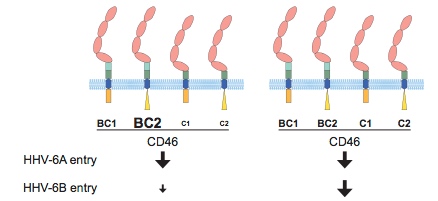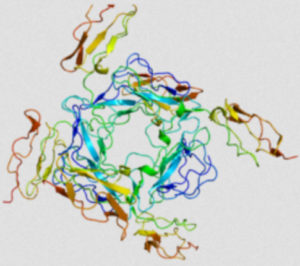CD46 is generally accepted to be the receptor for HHV-6A, and CD134 has been proposed as the receptor for HHV-6B. However, even though CD46 is expressed on all nucleated cells, some T cells cannot be infected by either HHV-6A or HHV-6B. A group from Aarhus University led by Per Höllsberg, MD, report that CD46 isoform patterns correlate with the ability of HHV-6B strain PL1 to enter T cells.

Professor Per Höllsberg, MD with first author Aida Hansen, PhD
BC2 dominant CD46 isoforms do not allow easy entry of HHV-6B, whereas an equally distributed isoform pattern results in efficient entry of HHV-6B PL1. The authors propose that differing isoform patterns of CD46 help explain the distinct tropism of the GS strain of HHV-6A and PL1 strain of HHV-6B.
The concept that the host cells use differential expression of alternate splice variants as a mechanism to induce different susceptibility to a specific pathogen is novel, according to the authors.

Only phenotypic patterns characterized by equal frequency of the CD46 isoforms allow efficient entry of HHV-6B (PL1 strain). Source: Virology
The group also notes that the brain is thought to predominantly express the C2 isoform of CD46 (Johnstone 1993) and that this might explain why the brain is especially sensitive to measles (Iwata 1994). They speculate that the preferential use of specific isoforms by HHV-6B PL1 may restrict its entry in certain cells and may help explain why HHV-6A is better able to infect certain neural cells.
Read the full text here (Hansen 2017).

